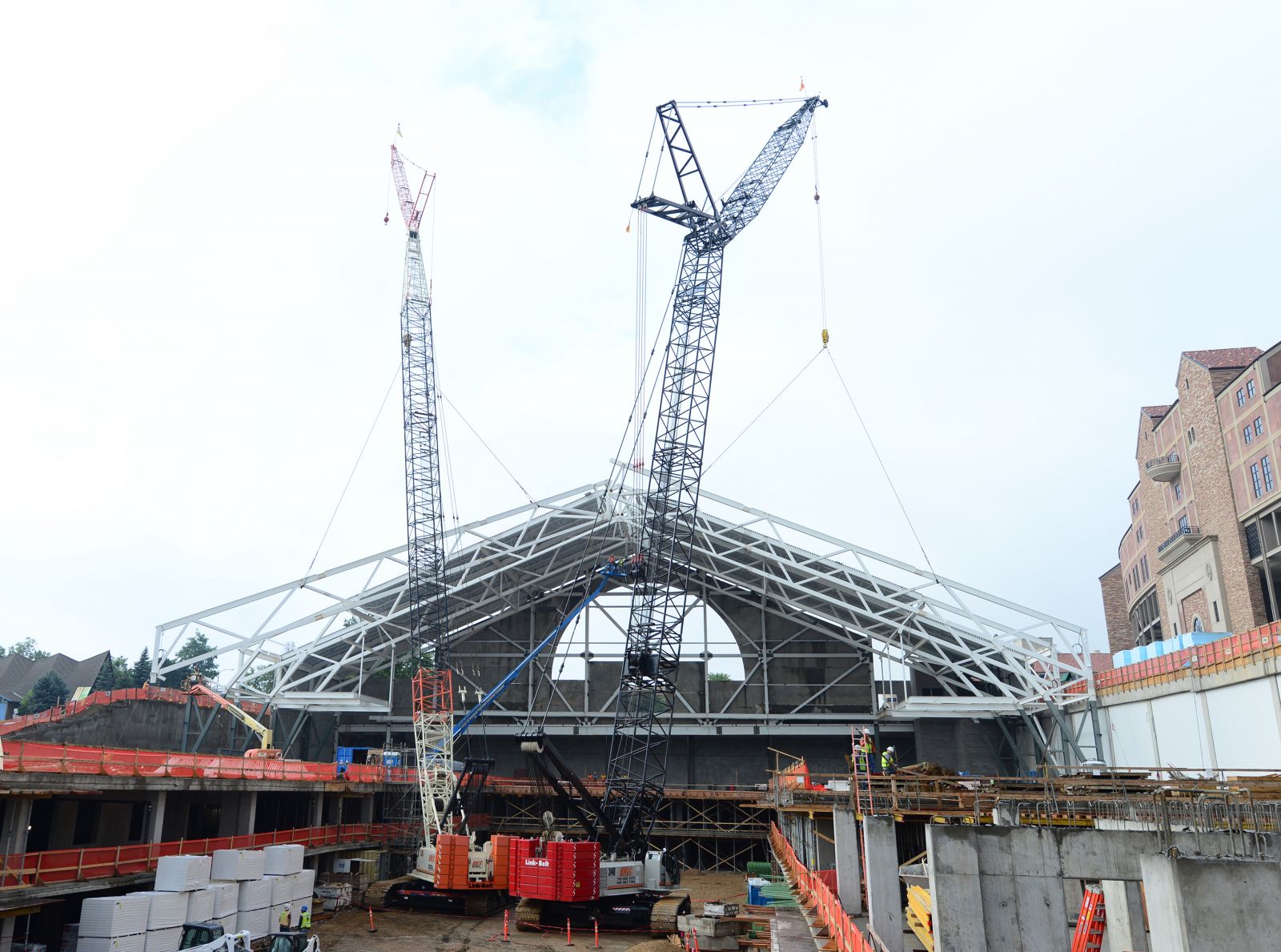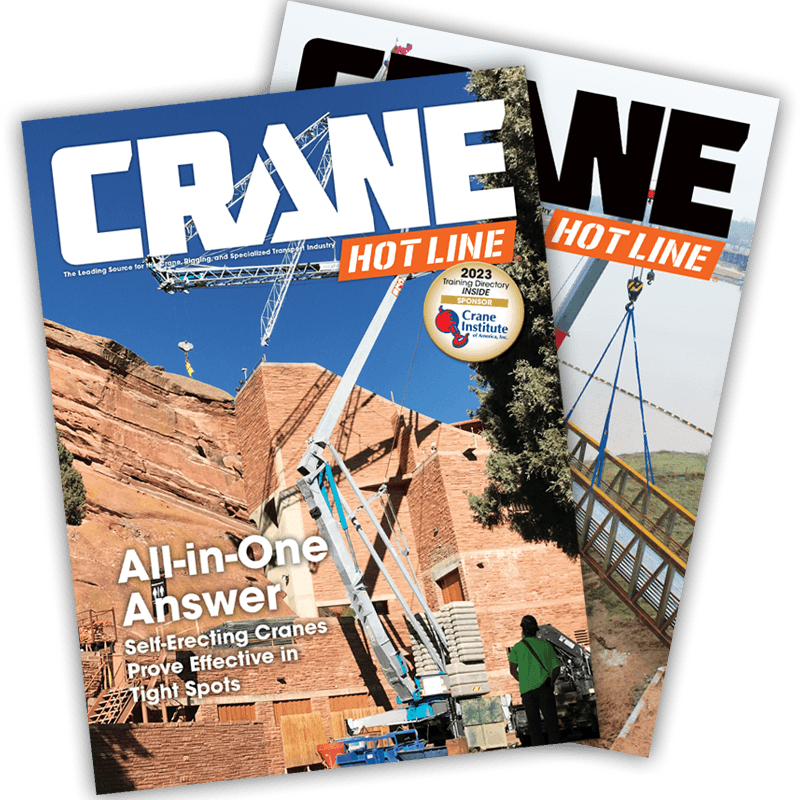Erix Crane's Crawlers Make Picks on Restricted Access Jobsite
August 3, 2016 – Erix Crane & Rigging Inc. of Denver and Colorado Springs, Colo., recently helped construct a new indoor football facility at University of Colorado - Boulder.

Enlarge Image
Erix Crane & Rigging uses two
Link-Belt crawlers on University
of Colorado football practice facility.
The 120,000-sq.-ft. indoor practice facility was planned as a zero-energy building, and it will have a two-story parking garage directly below the multi-purpose practice facility. Over 80,000-cu-yds. of rock and dirt were excavated to make room for a 128-ft.-high steel frame structure with an architectural precast foam-core concrete exterior.
In order to reach all corners of the jobsite, Erix Cranes equipped two Link-Belt lattice-boom crawler cranes with either a fixed jib or luffing attachment. The 250-ton 298 HSL utilized 180 ft. of main boom and 60 ft. of fixed jib, offset at 15°while a 300-ton 348 H5 was equipped with 150 ft. of luffing boom and a 100 ft. luffing jib. “This is a crane-dependent building construction with only one of four sides available for crane work,” said Sam Lowry, part-owner of Erix Crane.
The roofline of the building is formed by the two cranes lifting 26 half-trusses measuring 137 ft. long that are mated to form 13 roof trusses. Once the two half-trusses are bolted together in the air, the 348 H5 holds the 80,000-lb. framework while the 298 HSL places structural steel supports that anchor the truss into position.
“During a truss lift, the 348 and 298 are usually just far enough from each other for adequate clearance—as close as 5 ft. My left track of the 348 and his right track on the 298 are pretty close,” said Mike Yearous, operator of the 348 H5. “We have to have both cranes positioned just exactly right with the 348 back farther than the 298. Once the 348 gets the final truss into position, the 298 needs the space to walk forward to lift its end of the truss.”
Since jobsite access is restricted, Erix Crane maintains a lifting schedule that erects steel at the furthest point from the base of the 348 H5 first. As steel erection is finished, the outside panel work that wraps the building must also be completed before moving the cranes, slowly working their way to closer radius lifts for structural steel and precast. Lowry noted that a definite advantage to having the 348 H5 is its capability and capacity with a luffing jib.
“The maintenance on these Link-Belts is minimal,” Lowry said. “They use less fuel, and we don’t have any problems with them.” As a small company without the resources or backup that a larger company might have, Lowry said that it’s important to have the support of its dealer, Power Equipment, to provide the help it may need.


